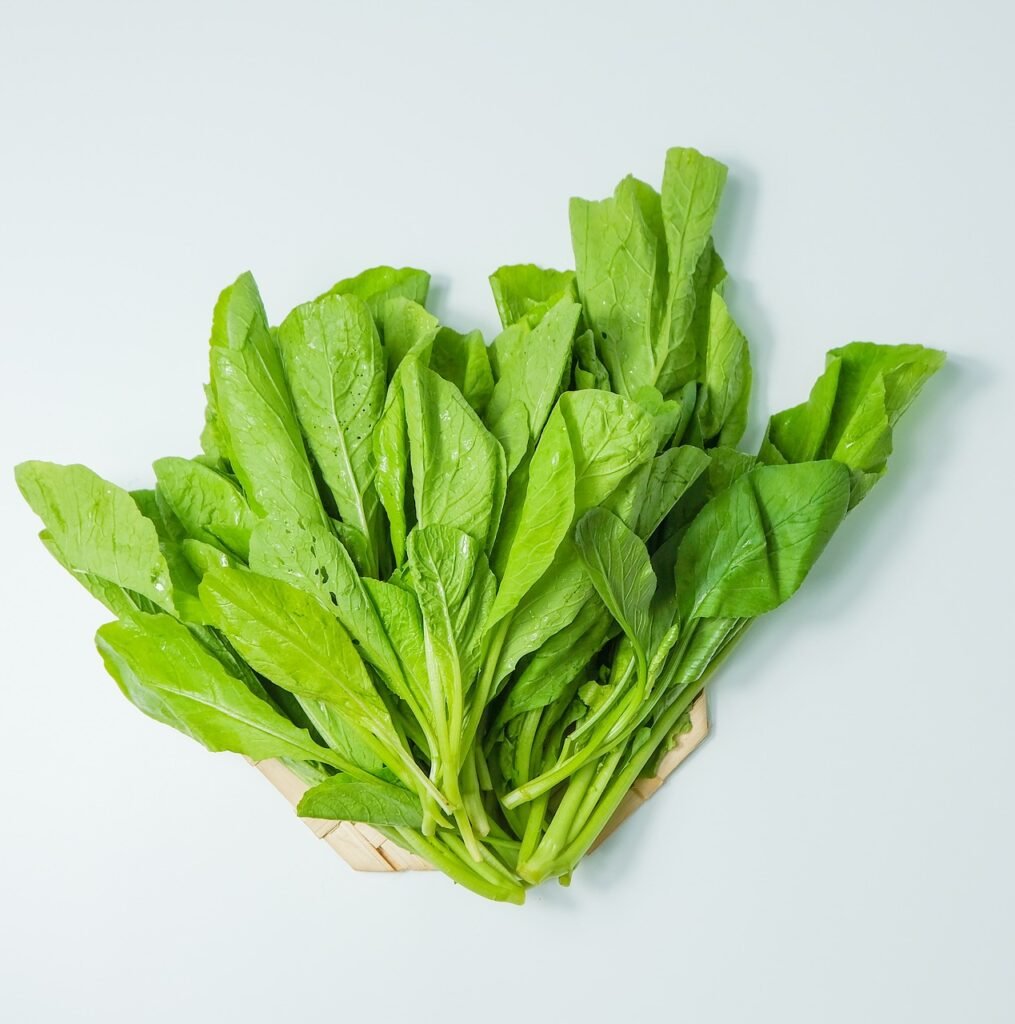
Growing spinach at home without seeds can be done through propagation from spinach cuttings. Here’s how to do it:
Growing Spinach from Cuttings:
- Selecting Cuttings: Choose healthy spinach plants from which to take cuttings. Look for stems that are about 4-6 inches long with several leaves attached.
- Preparing the Cuttings: Use clean, sharp scissors or pruning shears to cut the stems just below a leaf node (where a leaf meets the stem). Remove any lower leaves to expose the nodes.
- Planting the Cuttings: Fill a small pot with well-draining potting mix or soil. Make a hole in the soil with your finger or a pencil and gently insert the stem cutting into the hole, ensuring that at least one leaf node is buried in the soil.
- Watering: Water the soil lightly to settle it around the cutting. Keep the soil evenly moist but not waterlogged. Place the pot in a location with indirect sunlight.
- Root Development: Over the next few weeks, the cutting should develop roots from the buried nodes. Monitor the soil moisture levels and water as needed to keep the soil consistently moist.
- Transplanting: Once the cutting has established roots and new growth has emerged, it can be transplanted into a larger container or directly into the garden bed if desired.
- Growing Conditions: Spinach prefers cool temperatures and partial shade. It can tolerate some direct sunlight but may bolt (produce flowers and seeds prematurely) in hot weather.
- Harvesting: Harvest spinach leaves as needed once they reach a size suitable for consumption. Regular harvesting promotes continued growth and ensures a fresh supply of tender leaves.

Health Benefits of Spinach:
Spinach is a nutrient-dense leafy green vegetable with numerous health benefits, including:
- Rich in Nutrients: Spinach is packed with vitamins and minerals, including vitamin A, vitamin C, vitamin K, folate, iron, and magnesium.
- Antioxidant Properties: Spinach contains antioxidants such as beta-carotene, lutein, and zeaxanthin, which help protect cells from oxidative damage and reduce the risk of chronic diseases.
- Heart Health: The high levels of potassium and magnesium in spinach can help lower blood pressure and reduce the risk of heart disease.
- Bone Health: Spinach is a good source of vitamin K, which is essential for bone health and may help prevent osteoporosis.
- Digestive Health: The fiber content in spinach promotes healthy digestion and can help prevent constipation.
- Eye Health: Lutein and zeaxanthin, antioxidants found in spinach, are important for eye health and may reduce the risk of age-related macular degeneration.
- Weight Management: Spinach is low in calories and carbohydrates but high in fiber, making it a great addition to weight loss diets.
- Immune Support: The vitamin C content in spinach supports a healthy immune system and helps the body fight off infections.
- Anti-Inflammatory Effects: Some compounds in spinach have anti-inflammatory properties, which may help reduce inflammation in the body and alleviate symptoms of inflammatory conditions.
By growing spinach at home and incorporating it into your diet, you can enjoy its many health benefits while enjoying fresh, homegrown produce.





Your article helped me a lot, is there any more related content? Thanks!